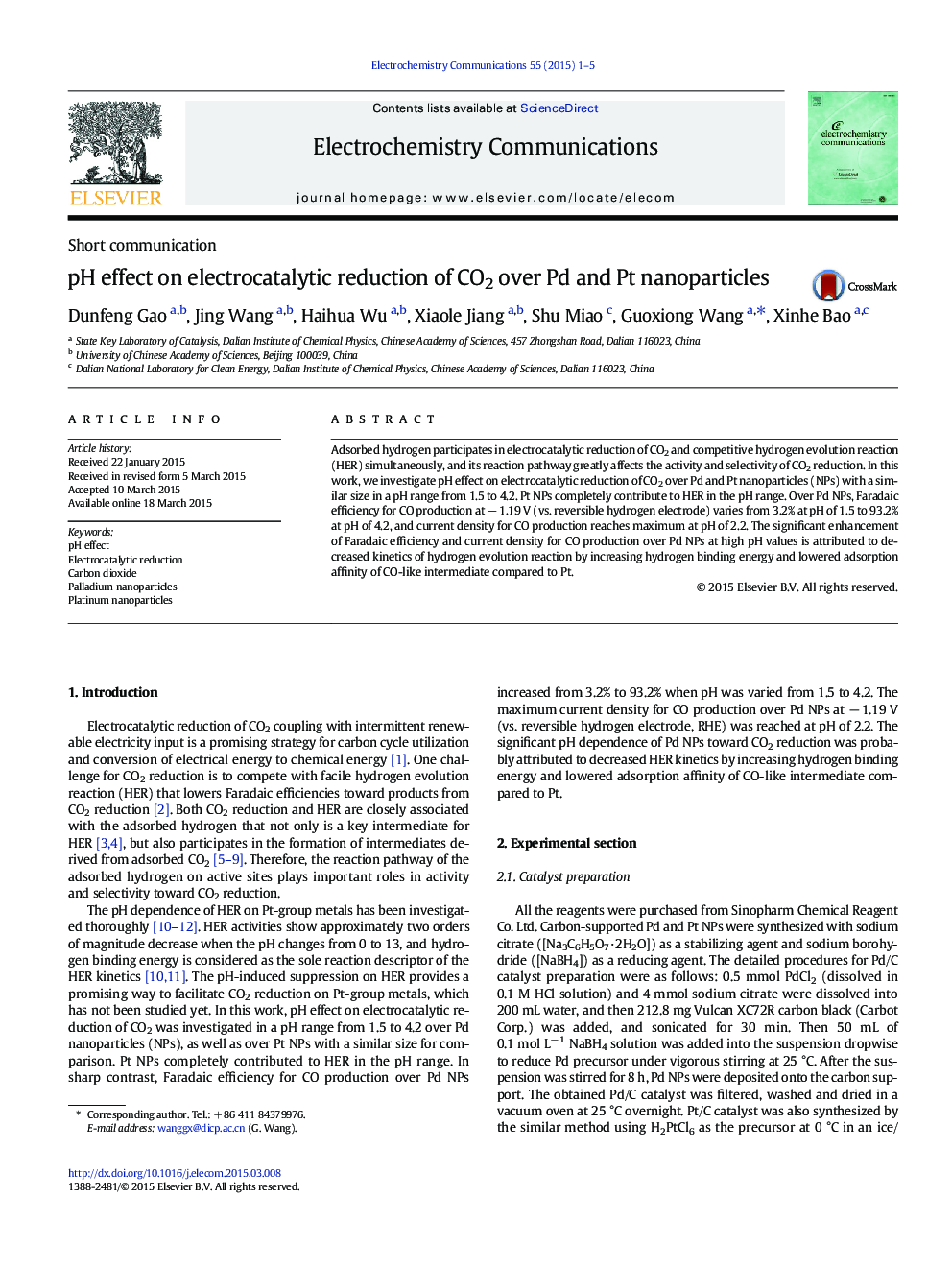| Article ID | Journal | Published Year | Pages | File Type |
|---|---|---|---|---|
| 178878 | Electrochemistry Communications | 2015 | 5 Pages |
•Significant pH dependence toward CO2 reduction was observed over Pd nanoparticles.•CO Faradaic efficiency over Pd nanoparticles varied from 3.2% to 93.2% in a narrow pH range from 1.5 to 4.2.•Pt nanoparticles completely contributed to hydrogen evolution reaction in the pH range.•Increased hydrogen binding energy at high pH suppressed hydrogen evolution reaction over Pd and Pt nanoparticles.•Lowered adsorption affinity of CO-like intermediate on Pd compared to Pt accounted for their different pH sensitivity.
Adsorbed hydrogen participates in electrocatalytic reduction of CO2 and competitive hydrogen evolution reaction (HER) simultaneously, and its reaction pathway greatly affects the activity and selectivity of CO2 reduction. In this work, we investigate pH effect on electrocatalytic reduction of CO2 over Pd and Pt nanoparticles (NPs) with a similar size in a pH range from 1.5 to 4.2. Pt NPs completely contribute to HER in the pH range. Over Pd NPs, Faradaic efficiency for CO production at − 1.19 V (vs. reversible hydrogen electrode) varies from 3.2% at pH of 1.5 to 93.2% at pH of 4.2, and current density for CO production reaches maximum at pH of 2.2. The significant enhancement of Faradaic efficiency and current density for CO production over Pd NPs at high pH values is attributed to decreased kinetics of hydrogen evolution reaction by increasing hydrogen binding energy and lowered adsorption affinity of CO-like intermediate compared to Pt.
